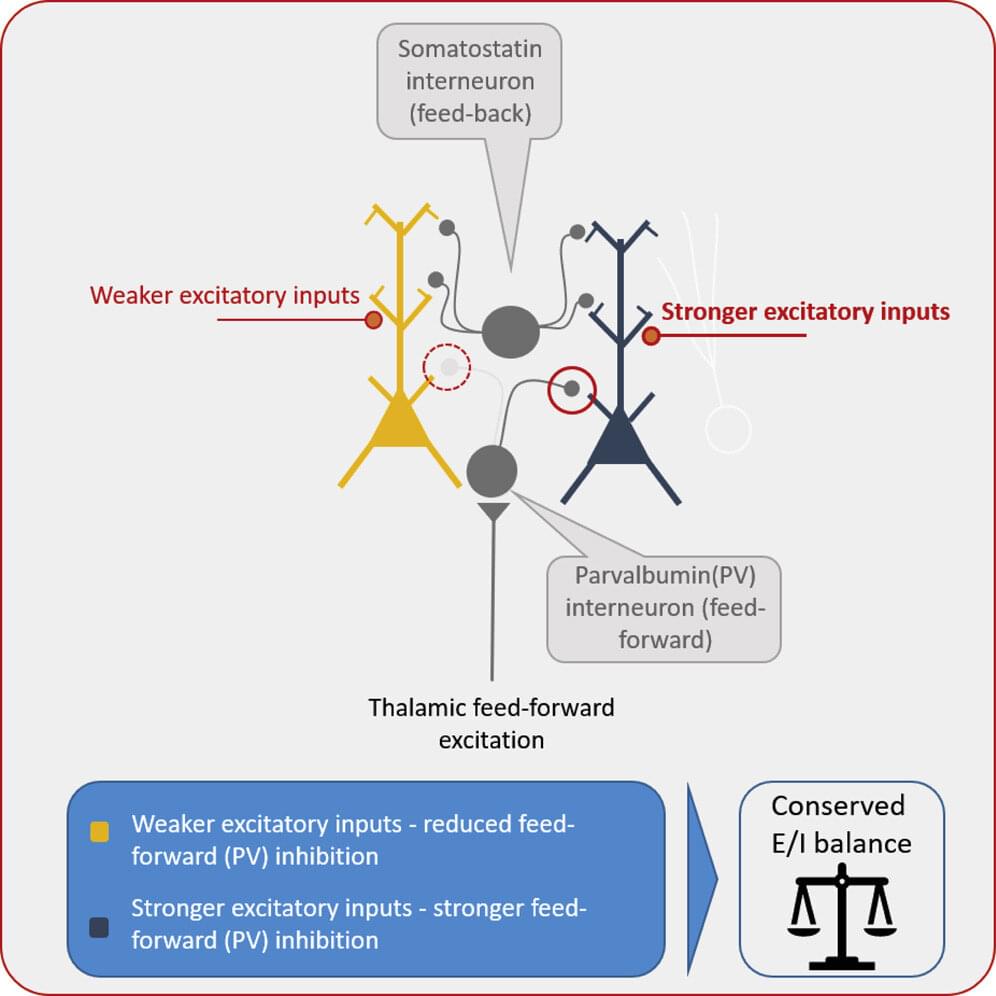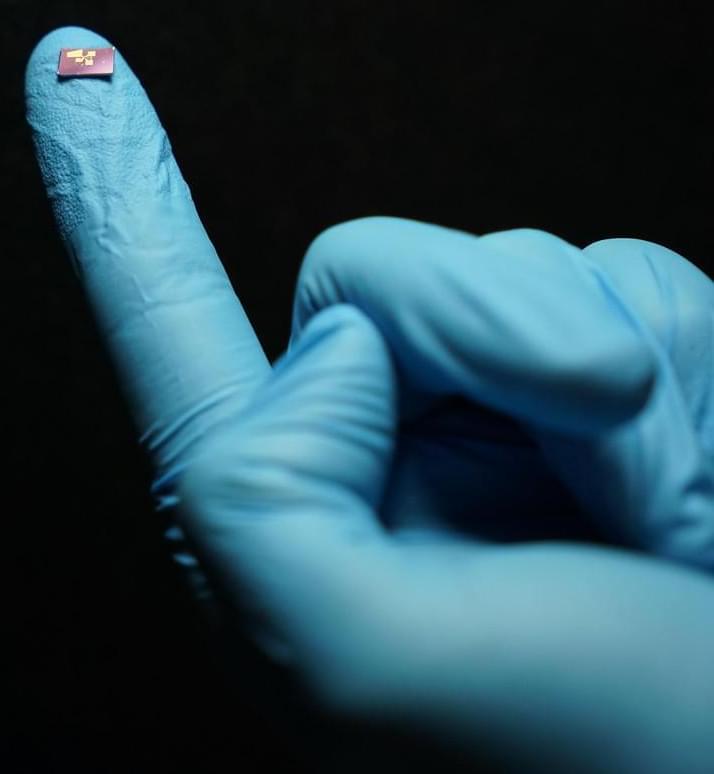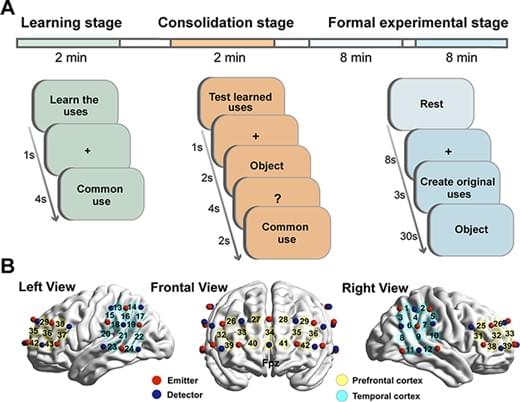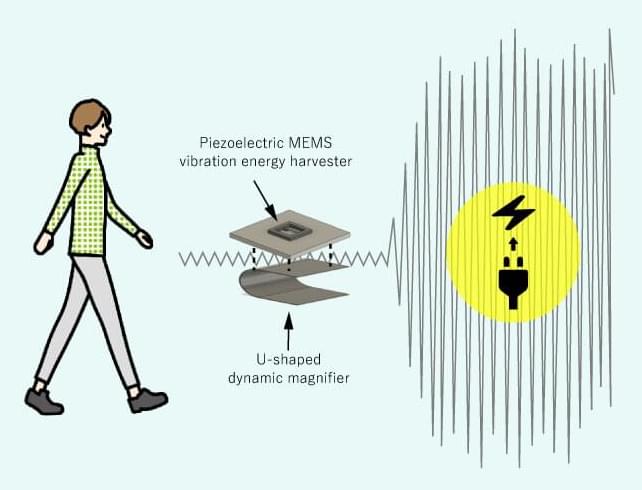Archive for the ‘mobile phones’ category: Page 67
Dec 7, 2022
How neurons autonomously regulate their excitability
Posted by Nicholi Avery in categories: biotech/medical, mobile phones, robotics/AI
Nerve cells can regulate their sensitivity to incoming signals autonomously. A new study led by the University of Bonn has now discovered a mechanism that does just that. The German Center for Neurodegenerative Diseases and the Max Planck Institute for Neurobiology of Behavior were involved in the work. The results have now been published in the journal Cell Reports.
Anyone who has ever sent a voice message with a cell phone knows how much the volume matters: Shouting into the microphone results in a distorted and unclear recording. But whispering is not a good idea either—then the result is too quiet and also difficult to understand. That is why sound engineers ensure the perfect sound at every concert and talk show: They regulate each microphone’s gain to match the input signal.
The neurons in the brain can also fine-tune their sensitivity, and even do so autonomously. A new study led by the University of Bonn and the University Hospital Bonn shows how they do this. For this purpose, the participants investigated nerve cell networks that also play a role in vision, hearing and touch. The stimulus first travels to the so-called thalamus, a structure deep in the center of the brain. From there, it is then conducted to the cerebral cortex, where it is further processed.
Dec 6, 2022
Advanced “Lab on a Chip” — Scientists Have Created a Powerful, Ultra-Tiny Spectrometer
Posted by Quinn Sena in categories: biotech/medical, mobile phones, robotics/AI, security
Researchers in the field of optical spectrometry have created a better instrument for measuring light. This advancement could improve everything from smartphone cameras to environmental monitoring.
The research, led by Finland’s Aalto University, developed a powerful, incredibly small spectrometer that fits on a microchip and is run by artificial intelligence. Their research was recently published in the journal Science.
The study used a relatively new class of super-thin materials known as two-dimensional semiconductors, and the result is a proof of concept for a spectrometer that could be easily integrated into a number of technologies such as quality inspection platforms, security sensors, biomedical analyzers, and space telescopes.
Dec 5, 2022
Reduced brain activity and functional connectivity during creative idea generation in individuals with smartphone addiction
Posted by Dan Breeden in categories: biotech/medical, mobile phones, neuroscience
The use of smartphones has become an increasingly popular behaviour in people’s lives. However, an increased number of people find it difficult to minimise the use of smartphones, leading to the emergence of smartphone-addictive behaviours (Panova and Carbonell, 2018; Busch and McCarthy, 2021). In particular, the rapid spread of coronavirus disease 2019 around the world has led to a dramatic increase in the number of smartphone addicts due to home isolation (Caponnetto et al., 2021). Smartphone addiction is an emerging behavioural addiction, which refers to excessive dependence on and abuse of smartphones by individuals (Kwon et al., 2013; Billieux et al., 2015). Notably, smartphone addiction has been reported to have negative impacts on individuals’ cognitive functions, such as attention (Choi et al., 2021; Lee et al., 2021), perception (Dong et al., 2014) and memory (Hartanto and Yang, 2016; Tanil et al., 2020). Nevertheless, the influence of smartphone addiction on individuals’ advanced cognition is still unclear. Smartphone addiction may impair flexible cognitive processes (Dong et al., 2014), such as those that contribute to creative cognition. However, to our knowledge, the influence of smartphone addiction on creative cognition has not been explored.
Given the negative effects and high incidence of smartphone addiction (Zou et al., 2021), it is essential to uncover the underlying mechanisms, especially the neural mechanisms, by which smartphone addiction affects creative cognition. Creative cognition is defined as the ability to generate original and useful products (Sternberg and Lubart, 1999). It is a core cognitive element that allows for daily flexible problem solving and the generation of new ideas. The main components of creative cognition are (i) overcoming the semantic constraints of existing knowledge, which involves goal-directed behaviour through cognitive control, and (ii) building unusual associations to expand the existing structure of knowledge, which involves the spontaneous and unconstrained generation of novel associations (Ward et al., 1997; Abraham, 2014; Marron and Faust, 2019).
According to the problematic mobile phone use model (Billieux et al., 2015), the lack of planning or reduced cognitive control is a crucial contributor to smartphone addiction behaviour. Previous studies have also indicated that impaired cognitive control is a prominent feature of smartphone addicts, characterised by an inability to focus on task-related information and an inability to suppress dominant, automatic responses (Van Deursen et al., 2015; Li et al., 2021). In fact, previous studies have emphasised the contribution of cognitive control to the generation of creative ideas (Beaty et al., 2016; Benedek and Fink, 2019). During creative idea generation, known ideas are often initially retrieved, which acts as a source of interference allowing the retrieval process to focus on familiar and dominant ideas (Abraham, 2014). In this context, cognitive control is needed to drive the retrieval process of novel and remote information.
Dec 5, 2022
Scientists create AI neural net that can unlock digital fingerprint-secured devices
Posted by Kelvin Dafiaghor in categories: information science, mobile phones, privacy, robotics/AI, security
Computer scientists at New York University and Michigan State University have trained an artificial neural network to create fake digital fingerprints that can bypass locks on cell phones. The fakes are called “DeepMasterPrints”, and they present a significant security flaw for any device relying on this type of biometric data authentication. After exploiting the weaknesses inherent in the ergonomic needs of cellular devices, DeepMasterPrints were able to imitate over 70% of the fingerprints in a testing database.
An artificial neural network is a type of artificial intelligence comprising computer algorithms modeled after the human brain’s ability to recognize patterns. The DeepMasterPrints system was trained to analyze sets of fingerprint images and generate a new image based on the features that occurred most frequently. This “skeleton key” could then be used to exploit the way cell phones authenticate user fingerprints.
In cell phones, the necessarily small size of fingerprint readers creates a weakness in the way they verify a print. In general, phone sensors only capture a partial image of a print when a user is attempting to unlock the device, and that piece is then compared to the phone’s authorized print image database. Since a partial print means there are fewer characteristics to distinguish it than a full print, a DeepMasterPrint needs to match fewer features to imitate a fingerprint. It’s worth noting that the concept of exploiting this flaw is not unique to this particular study; however, generating unique images rather than using actual or synthesized images is a new development.
Dec 4, 2022
An architecture that gives users full control of their smartphones
Posted by Saúl Morales Rodriguéz in categories: computing, mobile phones, surveillance
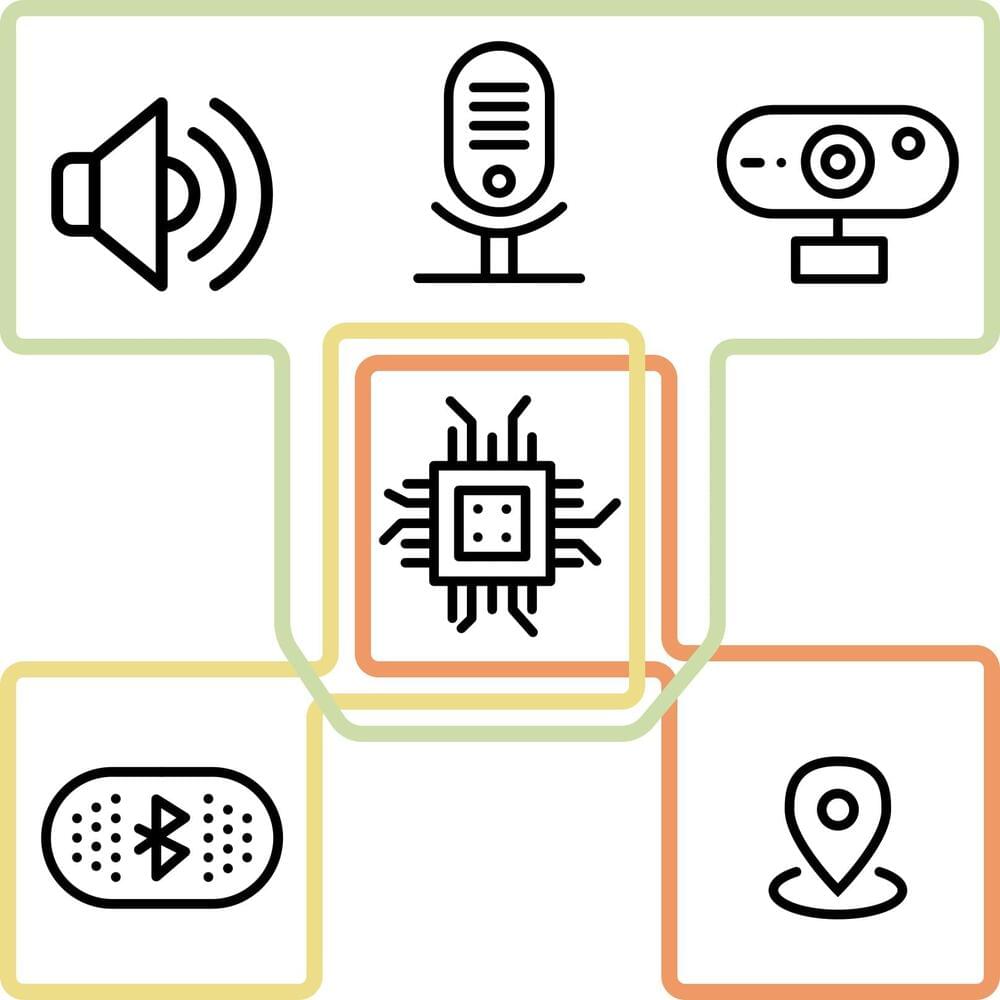
In recent years, many smartphone users have become concerned about the privacy of their data and the extent to which companies might have access to this data. As things stand today, the applications that users can run on their phone and what they can do with these applications is determined by a few big tech companies.
Researchers at ETH Zurich have recently set out on a quest to change this current trend, through the development of a new smartphone architecture called TEEtime. This architecture, introduced in a paper pre-published on arXiv, allows users to flexibly choose what resources on their smartphone they will dedicate to legacy operating systems, such as Android or iOS, and which they wish to keep for their own proprietary software and data.
Continue reading “An architecture that gives users full control of their smartphones” »
Dec 4, 2022
Man Rescued in Alaska After Activating iPhone 14 Emergency SOS Feature
Posted by Quinn Sena in category: mobile phones
A stranded man in Alaska was rescued after using Apple’s new Emergency SOS satellite feature to contact emergency services.
According to Alaska State Troopers (Opens in a new window) on Dec. 1, at 2 a.m. (AST), rescue services were notified that an adult male traveling via snowmachine from the remote town of Noorvik to Kotzebue had activated an Emergency SOS via satellite on his iPhone after becoming stranded. The area did not have Wi-Fi or cellular coverage.
The Apple Emergency Response Center provided Troopers and the Northwest Arctic Borough Search and Rescue Coordinator with the GPS coordinates of the stranded man, and four volunteer searchers located and transported him to Kotzebue. No injuries were reported.
Dec 1, 2022
3 Ways You Use Quantum Physics Every Day
Posted by Jose Ruben Rodriguez Fuentes in categories: mobile phones, quantum physics
From your smartphone to just a regular clock, quantum physics may be weird, but it’s also practical.
Nov 30, 2022
20 Times More Intense: New Material Will Help Improve Phone and Television Displays
Posted by Jose Ruben Rodriguez Fuentes in categories: chemistry, computing, mobile phones, physics
Scientists have created, synthesized, and analyzed a new class of fluorophores, which are luminous chemical compounds. These are the new bullet systems based on cyanopyrazine. According to research, the inclusion of cyanogroup compounds in fluorophores considerably boosts the efficiency of organic light-emitting diodes (OLED). This indicates they can be utilized to develop new materials to improve the brightness of smartphone, computer, and television screens. The researchers’ findings were recently published in the journal Dyes and Pigments.
The research was led by Egor Verbitskiy, the director of the Postovsky Institute of Organic Synthesis Ural Branch of RAS and a member of the Laboratory of Medical Chemistry and Advanced Organic Materials at the Ural Federal University. He states that physicists were aware that introducing cyanogroups to fluorophores can enhance the OLEDs’ properties and overall efficiency.
Nov 29, 2022
High-performance and compact vibration energy harvester created for self-charging wearable devices
Posted by Shubham Ghosh Roy in categories: climatology, mobile phones, physics, wearables
Walking can boost not only your own energy but also, potentially, the energy of your wearable electronic devices. Osaka Metropolitan University scientists made a significant advance toward self-charging wearable devices with their invention of a dynamic magnifier-enhanced piezoelectric vibration energy harvester that can amplify power generated from impulsive vibrations, such as from a human walking, by about 90 times, while remaining as small as currently developed energy harvesters. The results were published in Applied Physics Letters.
These days, people carry multiple electronic devices such as smartphones, and wearable devices are expected to become increasingly widespread in the near future. The resulting demand for more efficient recharging of these devices has increased the attention paid to energy harvesting, a technology that converts energy such as heat and light into electricity that can power small devices. One form of energy harvesting called vibration energy harvesting is deemed highly practical given that it can transform the kinetic energy from vibration into electricity and is not affected by weather or climate.
A research team led by Associate Professor Takeshi Yoshimura from the Graduate School of Engineering at Osaka Metropolitan University has developed a microelectromechanical system (MEMS) piezoelectric vibration energy harvester that is only approximately 2 cm in diameter with a U-shaped metal component called a dynamic magnifier. Compared with conventional harvesters, the new harvester allows for an increase of about 90 times in the power converted from impulsive vibrations, which can be generated by the human walking motion.

